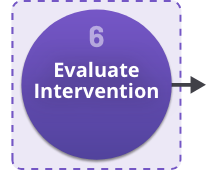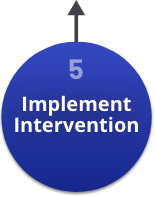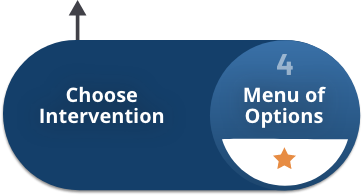Procedure: Evaluate Intervention
Coaching Process > Evaluate Intervention
- Was the intervention implemented? If not, then you can’t determine if it is working. You will need to problem solve with the teacher about barriers to implementation.
- Is the intervention working? If student behaviors are not changing and the intervention is being implemented, you will need to problem solve with the teacher. Problem solving involves using data from observations in the classroom, evaluating what is/isn’t working, determining if the plan needs to be adjusted, and/or whether an entirely new plan needs to be created.
There are four elements to effective implementation and evaluation:
How To
How to Evaluate the Intervention(s) – Conducting Follow-Up Observations
Come up with a timeline and system for determining if the intervention is working. Usually, the first week of implementation is the most challenging and this is a good time to monitor and provide support to teachers. Monitoring can include having the teacher self-monitor, and/or coach observations with performance feedback (see Implement Intervention).
Once you have established that the intervention is being implemented, you can evaluate changes in teacher use of practices and student behaviors.
It is important that you gather data on the area targeted by the intervention. In other words, if during the feedback meeting the teacher wanted to focus on improving the use of praise, an intervention from the menu of options linked to praise should have been selected. Now you can gather the same data you gathered to provide feedback (data on the teacher’s use of praise) and compare this to before they started using the intervention.
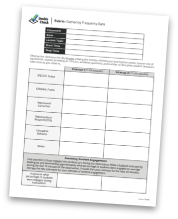
Gather Frequency Data
Arrange to conduct a follow-up classroom observation during a time that the teacher is implementing the intervention.
Gathering the frequency data will be important because it will let you know whether the teacher increased their use of praise and opportunities to respond and whether student engagement increased. It will also let you know if the teacher now uses fewer reprimands and if student disruptive behavior decreased.
You may want to do a refresher by watching the observation videos and practicing so that you will gather the data similarly to when you gathered these data in the past.
Complete Assessment Rubric
Provide Evaluation Feedback
Complete Evaluation Feedback Form
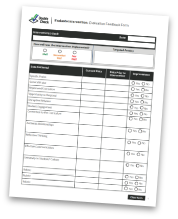
Reflection & Tips:

References to Other Relevant Resources:
Reinke, W., Herman, K., & Sprick, R. (2011). Motivational interviewing for effective classroom management: The classroom check-up. New York, NY: Guilford Press.
Sprick, R., Knight, J., Reinke, W. M., Skyles, T., & Barnes, L. (2010). Coaching classroom management: Strategies and tools for administrators and coaches. (2nd ed.). Eugene, OR: Pacific Northwest Publishing.


